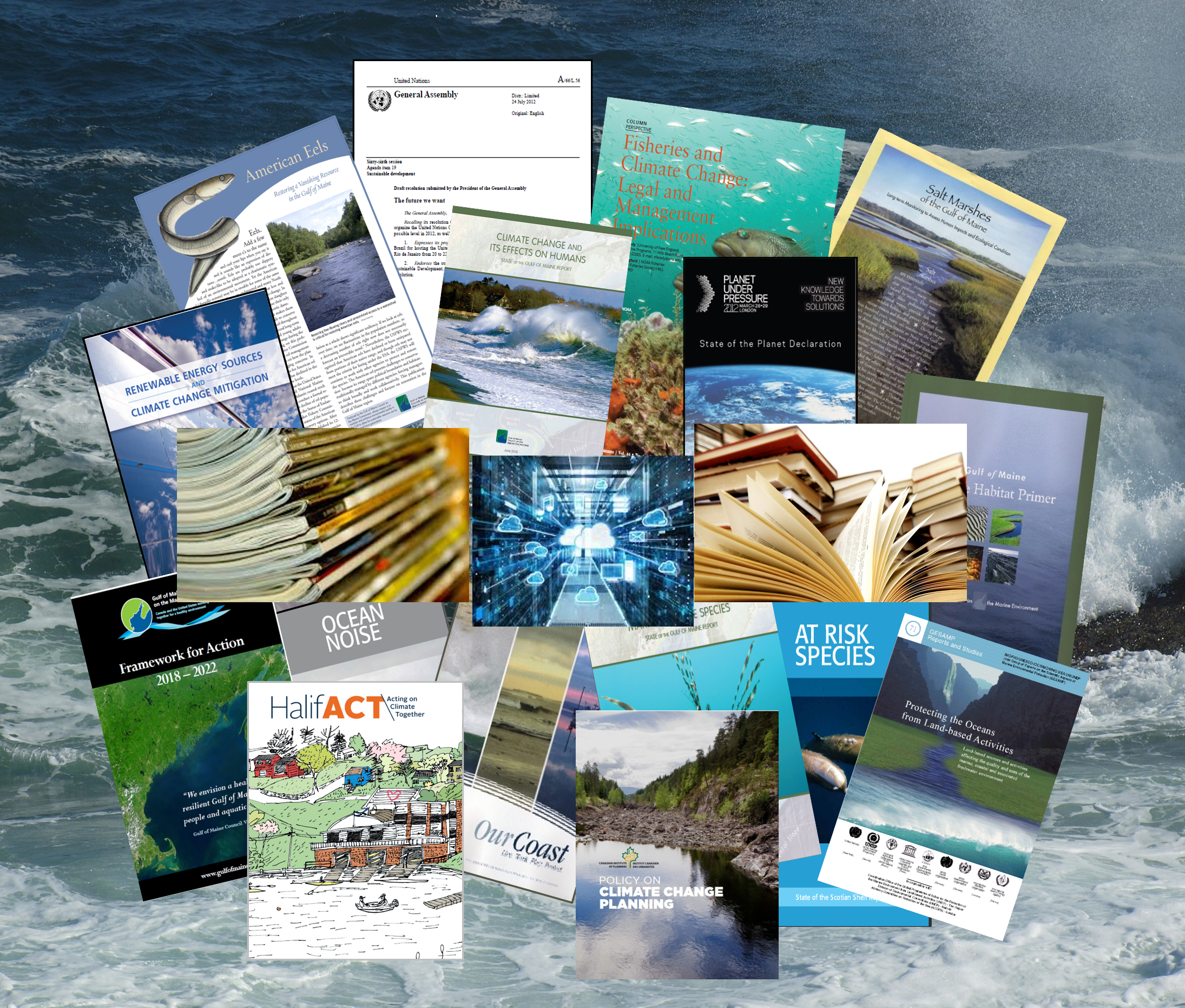Today, the volume of information about the far-reaching effects of climate change is massive and growing. Following the discovery in the early decades of the twentieth century that rising global temperatures were primarily caused by carbon dioxide emissions, the number of publications on climate subjects rapidly spiralled upward, particularly since 2000. These publications could aid decision makers of all types – individuals, communities, private and public sector organizations, and governments at all levels – as they determine how to deal with rising sea level, devastating storms, droughts, floods, heatwaves, and wildfires, and growing food insecurity resulting from climate change.
In addition to the primary research literature, grey literature on climate change abounds in a wide variety of formats (see Table 1).
Table 1. Types of Grey Literature about Climate Change
-
-
- Blog Posts
- Briefing (Policy) Notes
- Conference & Workshop Papers
- Databases and Data Sets
- Fact Sheets
- Government Publications (many types)
- Industry / Consultant Reports (many types)
- Infographics
- Literary and Artistic Works
- Maps
- Media Releases
- Meeting Records
- Newsletters
- News Media Reports (several types)
- NGO Publications (many types)
- Patents
- Photographs and Graphic Images
- Reports (many types)
- Social Media Posts
- Standards
- Theses / Dissertations
- Think Tank Publications (many types)
- Video & Audio Posts
- Websites — and more …
-
This diversity is largely related to how and where information is used in decision making processes. Briefing notes, for example, are widely used in organizational settings especially in government contexts.
In a recent paper presented at the Twenty-Fifth International Conference on Grey Literature in Amsterdam, we described nine prominent roles that grey literature fills in climate change decision processes (see Table 2) (MacDonald & Manuel, 2024).
Table 2. Roles of Grey Literature in Climate Change Decision Processes
To Report Research Results
To Synthesize Information (e.g., Research and Professional Literature)
To Inform Policy Makers and the Public
To Advocate for Policy Change
To Implement Policy
To Promote Change in Professional and Individual Practice
To Educate
To Broker Information and Promote Networking
To Counter Misinformation
Although in some circles grey literature is considered to be of questionable value, this type of publications is used extensively in public policy development and decision processes. Recognizing that grey literature is designed to fulfill different roles and produced to facilitate decision processes can counter some of the stigma attached to it. Due to its ubiquity and accessibility, many people (probably all people) encounter grey literature in their daily lives. Consequently, given its roles in informing and educating, this genre may have far greater societal influence than other types of information. People in every area of society need accurate and accessible information to make decisions necessary to avert climate disaster. In the words of the conference theme, understanding the numerous roles grey literature fulfills can enable citizens, managers, planners, and policy- and decision-makers to “confront climate change with trusted grey resources.”
Reference
MacDonald, B. H., & Manuel, P. (2024). Information, public decision-making, and climate change: The many roles of grey literature. In D. Farace & J. Frantzen (Eds.), Twenty-Fifth International Conference on Grey Literature “Confronting Climate Change with Trusted Grey Resources”. – OBA Congres Amsterdam, November 13-14, 2023 (pp. 51–61). TextRelease. https://doi.org/10.26069/greynet-2024-000.501-gg
Abstract: The far-reaching effects of climate change are among the leading global concerns today. The impacts of changing climate manifest in rising global temperatures (on land and in the ocean), escalating destructive extreme weather events, increasing biodiversity loss, shifting biomes, growing food insecurity, greater health risks (physical and mental), and involuntary migration of people, among other interconnected factors. The complexity of these problems individually and collectively is receiving extensive consideration in research and public arenas. Concerns about the influences of climate change have been increasing since the 1950s and through the last half of the twentieth century scientific understanding reached a consensus of the causes and numerous negative outcomes. The impacts have become clear in the first decades of the twenty-first century. Researchers in many disciplines are cautioning that the world is rapidly reaching a tipping point in the overall health of the planet, after which recovery will be very difficult. In addition, decision makers are grappling with how to evaluate multiple and sometimes competing calls for action and to decide how to address the issues best.
In both research and decision-making settings, grey literature has been a prominent information genre about the multifaceted aspects of climate. Large quantities of grey literature on climate and climate change subjects have been produced. Academic institutions, governmental and intergovernmental bodies, non-governmental organizations, professional associations, think tanks, and news media have turned out grey literature ranging from brochures to hefty technical reports. These materials have been generated in print and digital formats to fulfil a suite of roles: 1) to report research findings, 2) to compile and synthesize literature on research and professional practice, 3) to inform policymakers and the public, 4) to advocate for policy development, 5) to implement policy, 6) to promote change in professional and individual practice, 7) to educate; 8) to broker information and promote networking, and 9) to counter misinformation. In this paper we draw on research about decision making in public policy and management practice about coastal and marine environments to illustrate how grey literature on climate subjects has been deployed in delivering on these roles. Grey literature is widely used in many decision-making contexts. Recognizing its numerous roles can inform citizens, managers, planners, and policy- and decision-makers in addressing the climate challenges facing society today.
Authors: Bertrum H. MacDonald and Patricia Manuel
